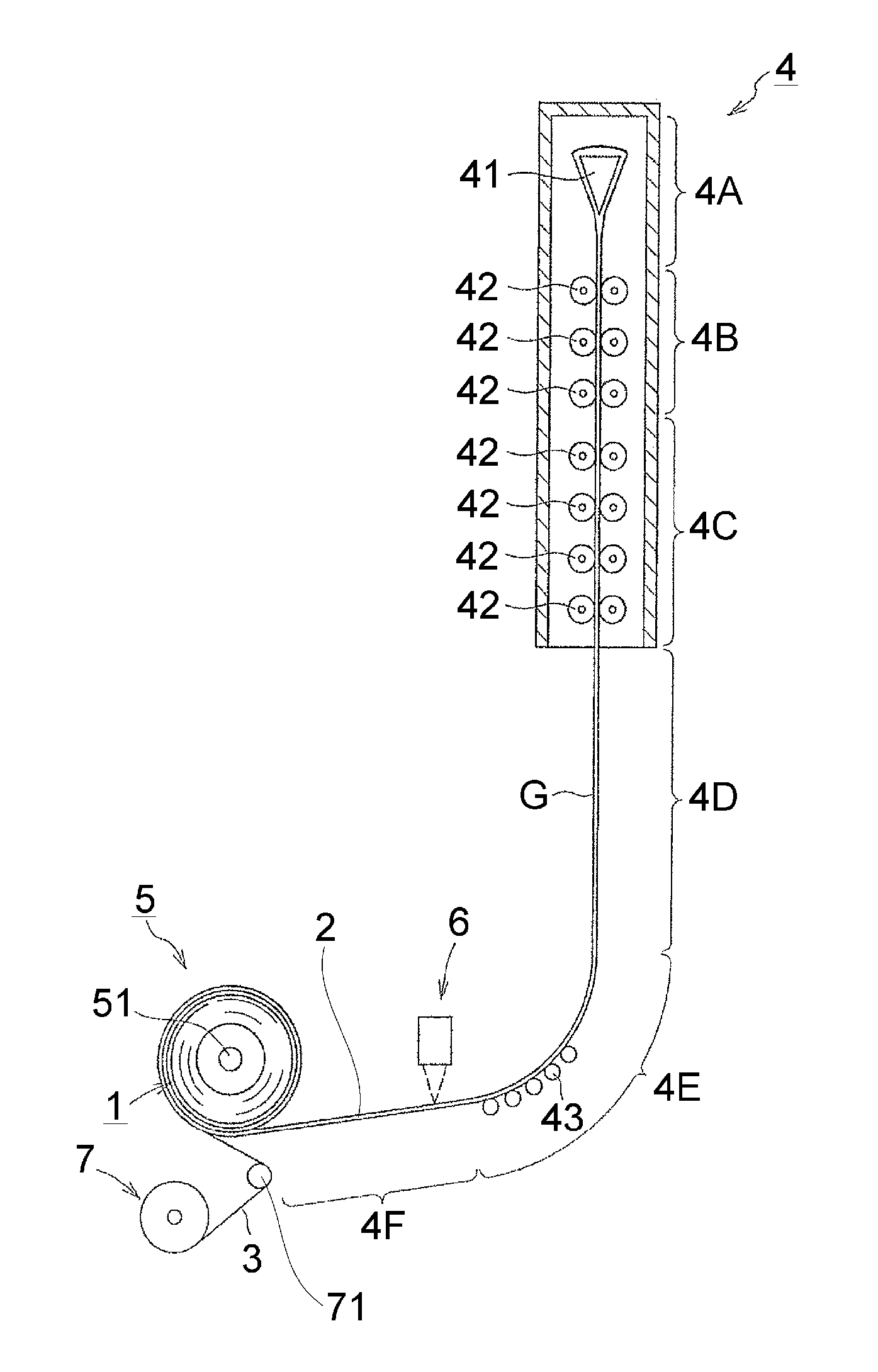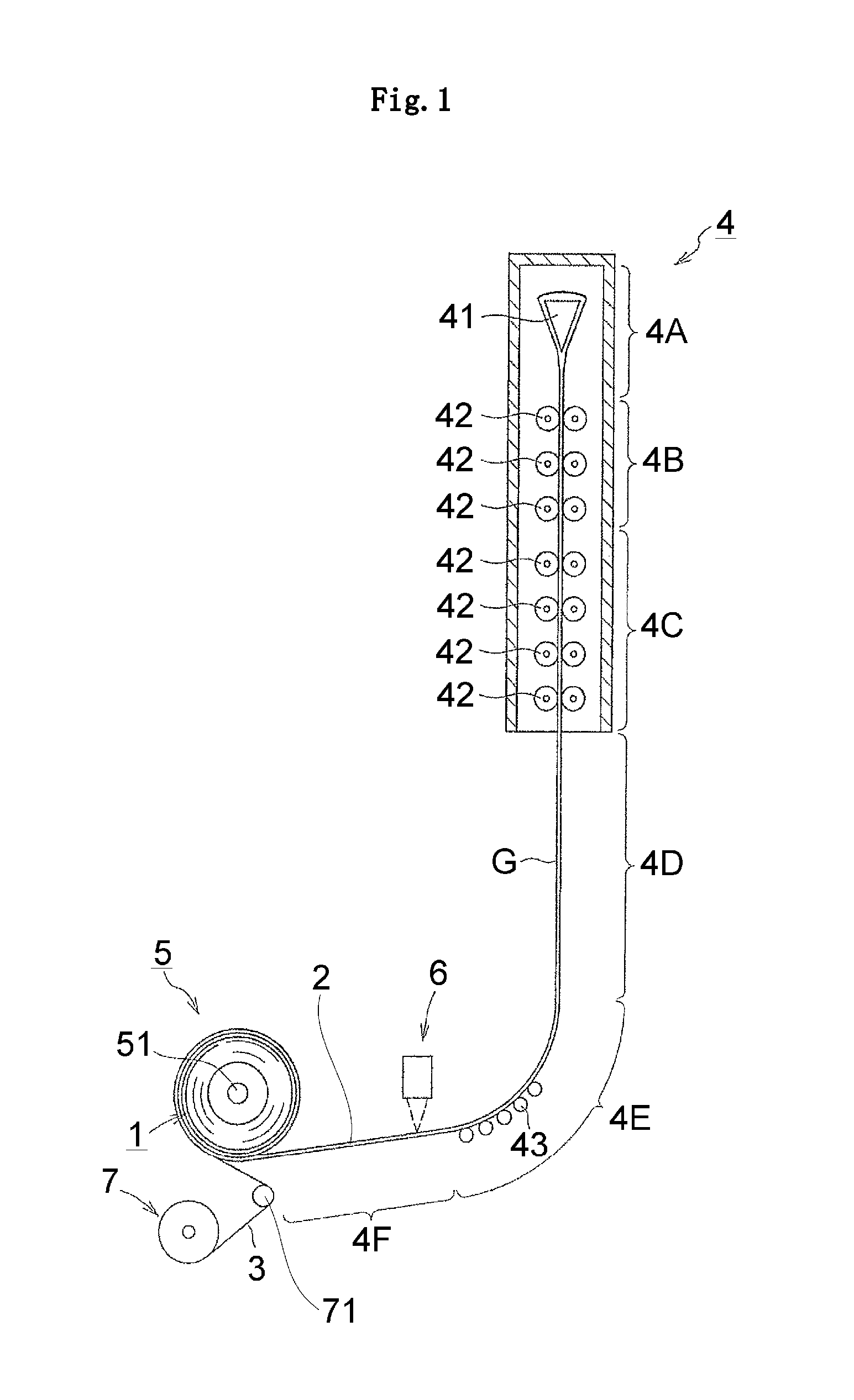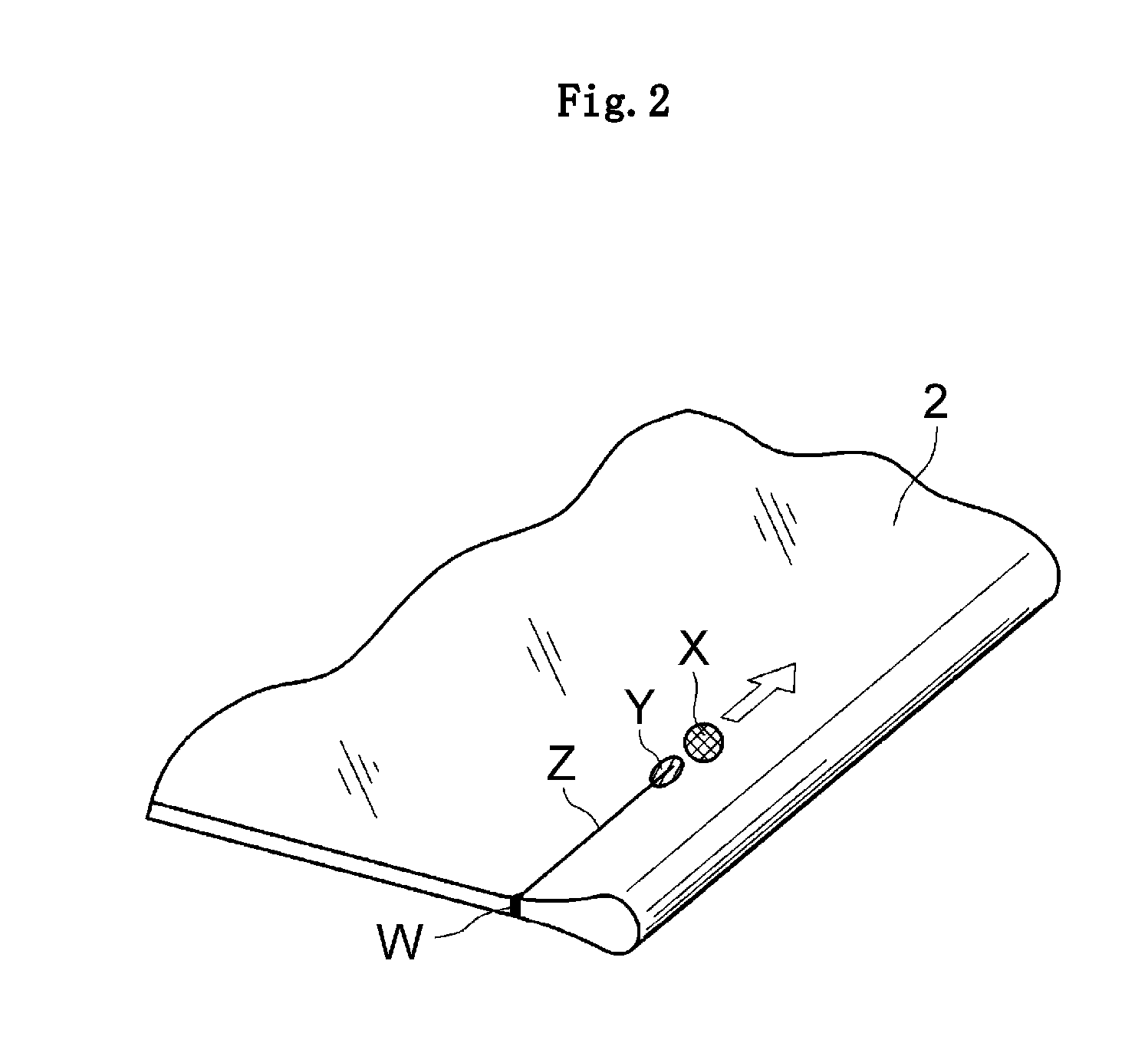[0019]According to the invention of claim 1, provided is a method of manufacturing a glass roll, including: forming a glass film by a downdraw method; and winding the formed glass film into a roll while superposing the glass film on a protective sheet, in which the glass film and the protective sheet are wound while higher tension in a winding direction is applied to the protective sheet than to the glass film. Thus,
high tension in the winding direction is not applied to the glass film, and hence it is possible to produce the glass roll free from loose winding owing to relatively
high tension in the winding direction applied to the protective sheet. Because the tension in the winding direction is not applied to the glass film when winding the glass film or the tension is low, it is possible to prevent a change in curvature of a curved region
during feed of the glass film along with its winding, and forming of the glass film is stabilized, with result that the glass film free from warpage,
waviness, and a change in film thickness can be wound. Further, small flaws do not occur on the surface of the glass film.
[0020]According to the invention of claim 2, a selvage portion formed at each end portion in a width direction of the glass film is
cut with a
laser by the time the glass film is wound into a roll. Thus, without performing post-
processing such as
polishing, it is possible to easily impart moderate smoothness to a
cut surface constituting each end surface in the width direction of the glass film. Relatively
high tension in the winding direction is applied to the protective sheet, and hence the end surface of the glass film and the protective sheet are easily held in contact with each other. However, even in the case of contact, owing to the smoothed end surface of the glass film, the end surface does not bite into the protective sheet, and hence it is possible to satisfactorily maintain separability between the glass film and the protective sheet. Further, when winding the glass film into a roll, chips resulting from small flaws are less likely to occur on the each end surface of the glass film. Thus, it is possible to reduce glass
powder, which is generated due to the chips on the end surface of the glass film, and hence there is a great
advantage in ensuring cleanness of the front and back surfaces of the glass film. The
cutting by the
laser described herein includes:
laser splitting utilizing thermal stress resulting from heating by the laser and cooling by a
refrigerant; and laser fusing of fusing and
cutting glass by heating by the laser.
[0021]According to the invention of claim 3, the glass film and the protective sheet are wound so that the protective sheet is kept to form an outermost layer. Thus, by applying relatively high tension in the winding direction to the protective sheet, the glass film can be easily fastened. Consequently, it is possible to manufacture the glass roll free from looseness.
[0022]According to the invention of claim 4, the downdraw method includes an overflow downdraw method. Thus, it is possible to form the glass film excellent in
surface smoothness without performing additional
processing after the forming, and to manufacture the glass roll excellent in surface accuracy.
[0023]According to the invention of claim 5, provided is a glass roll in which higher tension in a winding direction is applied to the protective sheet than to the glass film. Thus, it is possible to provide the glass roll obtained by tightly winding the glass film free from warpage,
waviness, and a change in film thickness.
[0024]According to the invention of claim 6, the glass film has a thickness of 1 μm or more and 200 μm or less. Thus, it is possible to impart appropriate flexibility to the glass film. Accordingly, it is possible to alleviate overstress applied to the glass film when winding the glass film, and to prevent the glass film from breaking.
 Login to View More
Login to View More 


